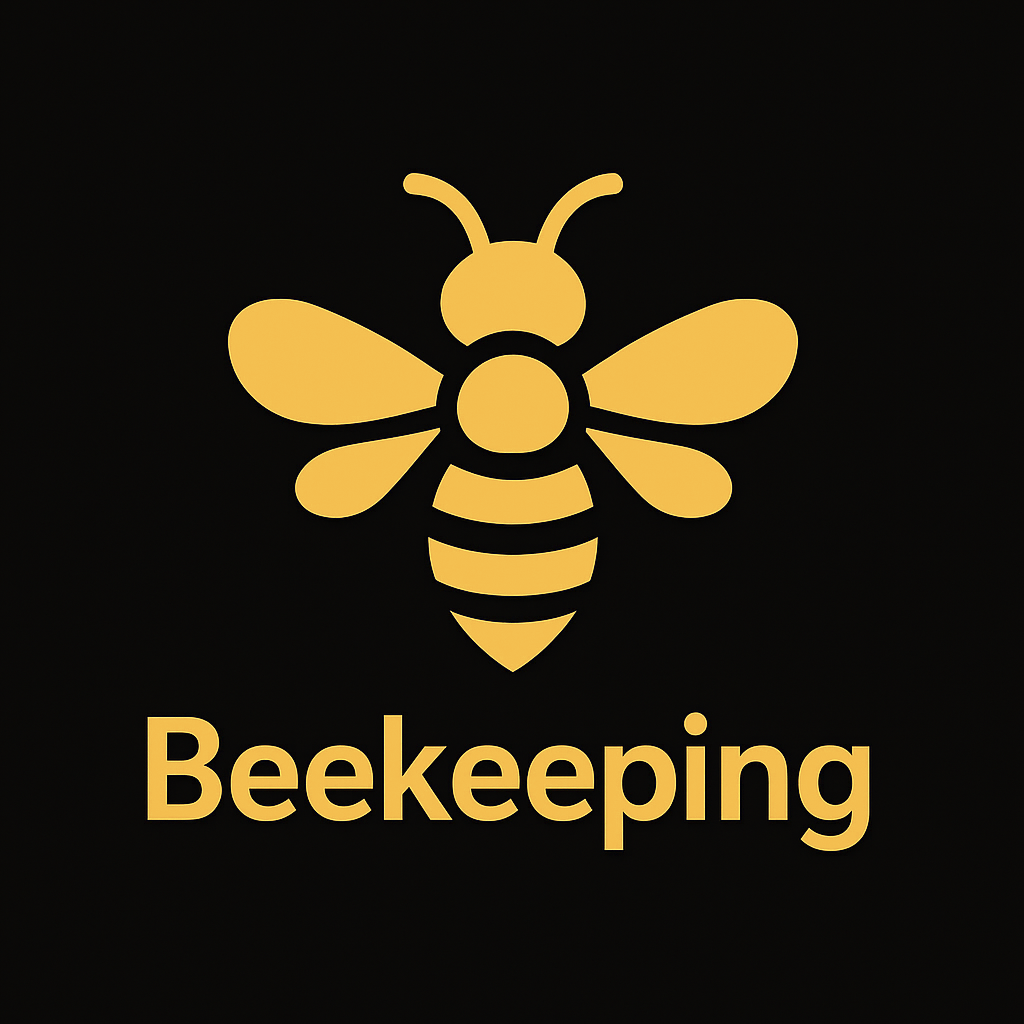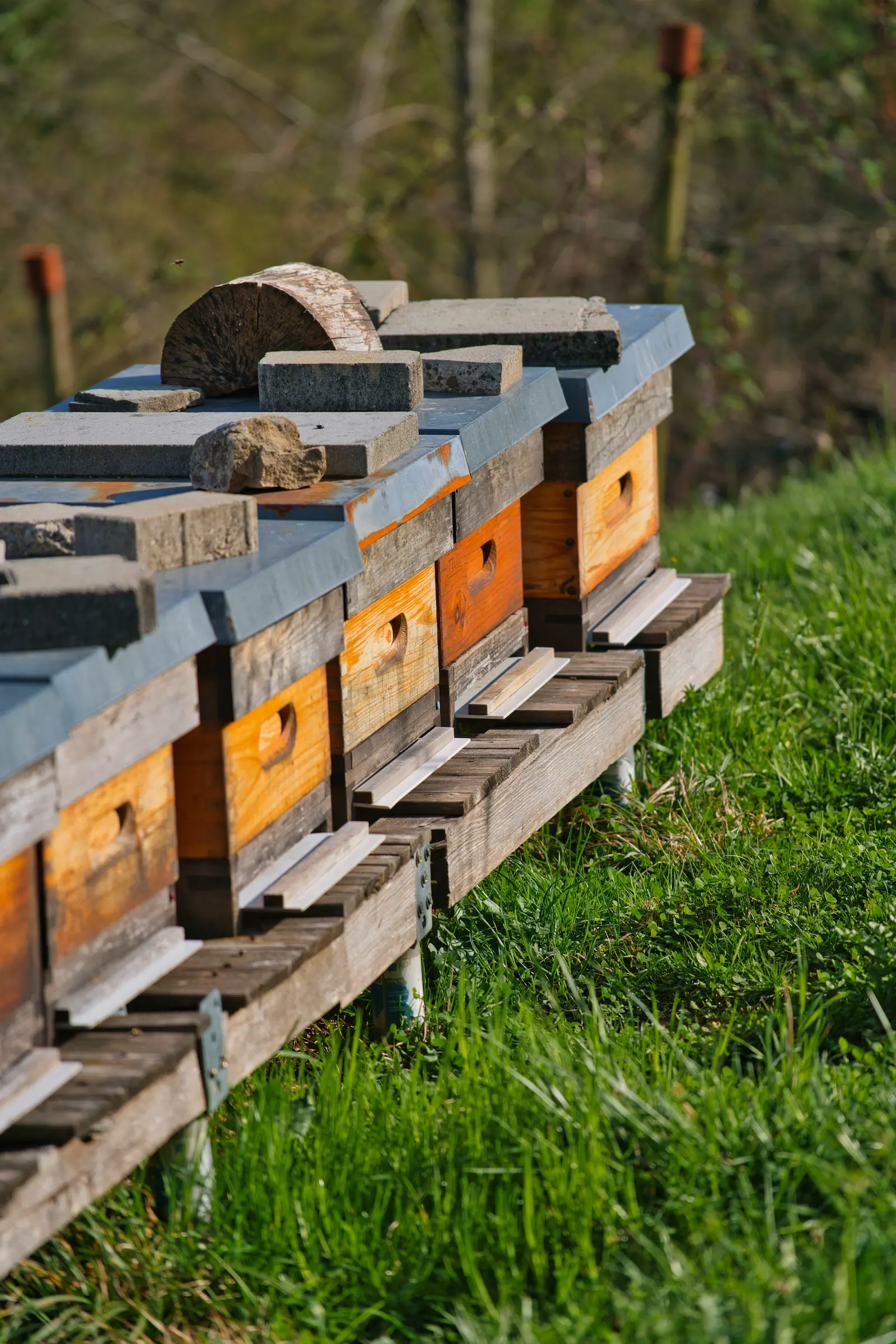Honeybee Behaviour (UK) – How a Colony Works
Honeybees (Apis mellifera) behave like a living system rather than a collection of individual insects. A colony coordinates food gathering, brood rearing, defence and temperature control using communication signals, flexible roles and a strong instinct to respond to changing conditions.
For UK beekeepers, behaviour is not just fascinating — it’s practical. When you understand why bees do what they do, inspections become calmer, diagnoses become quicker and seasonal management makes more sense.
Always interpret behaviour in context: weather, nectar flow, colony strength and queen status. A calm colony on a good day can feel very different after a cold snap, a nectar gap, or when swarm pressure is building.
Communication: waggle dance, pheromones and “hive signals”
Honeybees communicate in multiple ways. The famous waggle dance helps foragers share direction and approximate distance to valuable forage. But equally important are chemical and tactile signals that coordinate day-to-day colony life.
-
Waggle dance: a recruitment behaviour that helps the colony concentrate effort on the best forage.
-
Pheromones: chemical signals used for alarm, cohesion, queen presence and orientation.
-
Sound and vibration: buzzing, fanning and “frame hum” can change depending on colony mood and conditions.
If you want the physical “hardware” behind these behaviours (eyes, antennae, mouthparts), see Anatomy.
Division of labour: worker roles and how they change
A honeybee colony works because tasks are shared. Most labour is done by worker bees. Workers often begin with internal tasks (cleaning and nursing) and move outward to guarding and foraging as they age — but roles can flex depending on colony needs.
If you see lots of pollen coming in, it often suggests brood is being fed. It doesn’t guarantee a laying queen — but it’s a useful clue alongside brood pattern.
Foraging behaviour: nectar flow, pollen collection and UK weather windows
Foraging is the colony’s “income”. Bees collect nectar (carbohydrates) and pollen (protein), plus water and propolis. In the UK, forage can be highly seasonal and weather-dependent, creating short windows of intense activity followed by gaps.
Foraging behaviour is also the mechanism that drives much of pollination. When bees move between flowers, pollen transfer supports crop yield and wildflower reproduction.
-
Nectar flow: when forage is strong, bees may draw comb quickly, expand brood and store surplus.
-
Nectar gap: when flowers are scarce, colonies can become more defensive and robbing risk can rise.
-
Orientation flights: young bees may hover and circle the entrance on warm afternoons — normal behaviour, not a swarm.
Seasonal planning helps: see Year in the Apiary for monthly context.
Swarming behaviour: why colonies do it and what it looks like
Swarming is a colony reproduction strategy. When conditions are right, a colony may prepare to split: the old queen leaves with a large group of workers, while remaining bees raise a new queen. In the UK, swarm pressure often builds in spring and early summer.
-
Strong colony with rapid expansion and crowding.
-
Queen cells (often along frame edges, but context matters).
-
A change in “feel” – busy, restless bees and a fuller brood nest.
Practical management sits in Hive Management, and swarm safety for the public is covered on Report a Swarm.
Hive defence: alarm signals, guarding and why temperament shifts
Defence is a normal part of honeybee behaviour. Guard bees patrol the entrance and respond to disturbance. When bees sting, they release alarm pheromone, encouraging others to defend the colony.
Defensiveness commonly increases with poor weather, forage gaps, rough handling, repeated disturbance, queen problems, or predator pressure. If a colony suddenly changes temperament, treat it as a clue: something has changed.
Temperature regulation: fanning, clustering and brood warmth
Honeybees regulate brood nest temperature tightly. Workers fan to move air through the hive, evaporate moisture from nectar, and cool during hot spells. In cold weather, bees cluster to retain heat and keep the colony alive.
In cooler months, you may see bees clustering tightly and flying less. That’s normal. Your focus is usually food stores, moisture control and minimal disturbance (see winter months in the Apiary Calendar).
Hygienic behaviour: cleaning, brood removal and colony health
Hygiene is both a behaviour and a management theme. Some colonies show stronger hygienic traits — detecting and removing diseased brood and keeping the nest area clean. Hygienic behaviour can reduce disease pressure and is relevant to varroa-associated viruses and brood issues.
For health topics, see: Varroa Management, Diseases and Pests, and Hygiene.
Record-keeping: behaviour patterns you can actually use
Behaviour becomes more useful when you can compare it over time. A single inspection is a snapshot. A season of notes is a pattern. Record items like temperament, brood pattern, forage activity, queen status and treatments.
If you want a structured way to track those patterns (especially across multiple hives), use: HiveTag.
Honeybee Behaviour FAQs (UK)
What is the waggle dance and what does it tell other bees?
The waggle dance is used to share direction and approximate distance to a good forage source. It helps the colony concentrate effort on the best nectar and pollen available.
Do bees really use pheromones?
Yes. Pheromones are chemical signals used for alarm, cohesion, queen presence and orientation. They help the colony coordinate quickly.
Why do bees fan at the hive entrance?
Fanning regulates temperature and humidity and helps move air through the hive. It can also help ripen nectar by encouraging evaporation.
Why do bees cluster in winter?
Clustering conserves heat. Bees generate warmth by vibrating flight muscles and rotate positions to prevent individuals becoming chilled for too long.
What triggers swarming behaviour in the UK?
Swarm pressure often increases with colony strength, crowding, seasonal expansion, queen status and available space. In the UK it commonly peaks in spring and early summer.
Is swarming a sign I’ve failed as a beekeeper?
Not necessarily. Swarming is natural. Beekeepers often manage it to avoid losing flying bees and honey production, but seeing swarm preparation doesn’t automatically mean you did something wrong.
Why do bees suddenly become defensive during inspections?
Weather, forage gaps, disturbance, queen issues, predator pressure or rough handling can all increase defensiveness. If the change is sudden, treat it as a signal worth investigating.
What’s the difference between orientation flights and a swarm?
Orientation flights often look like young bees hovering and circling the entrance on warm afternoons. A swarm is a larger mass leaving the hive and forming a cluster elsewhere.
How does behaviour link to pollination?
Foraging behaviour drives pollination. Bees move between flowers collecting nectar and pollen, transferring pollen in the process. See Pollination.
What is hygienic behaviour and why does it matter?
Hygienic behaviour is when workers detect and remove diseased or dead brood and keep the nest area clean. It can reduce disease pressure and matters in the context of brood disease and varroa-associated viruses.
Do bees forage in rain or cold weather?
Foraging reduces significantly in cold, wet or windy conditions. UK weather can create short forage windows, which is why seasonal planning and monitoring stores is important.
How can I track behaviour changes properly?
Record temperament, brood pattern, foraging activity, queen status and treatments. Consistent records help you spot patterns and make better decisions. HiveTag can help: HiveTag.

